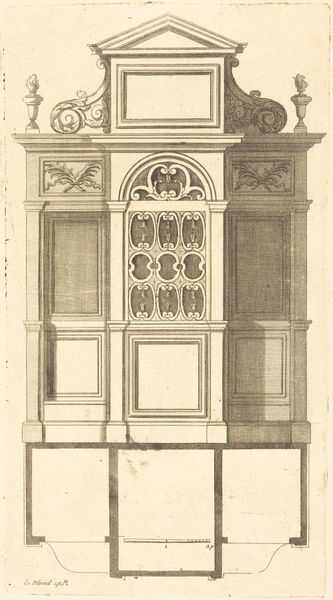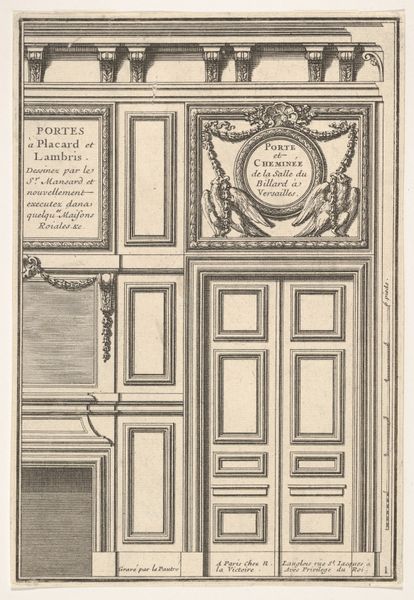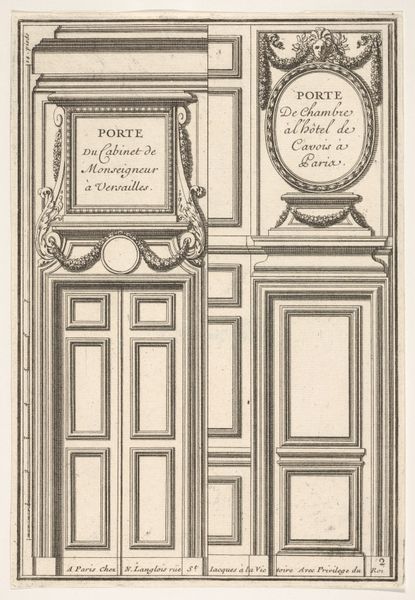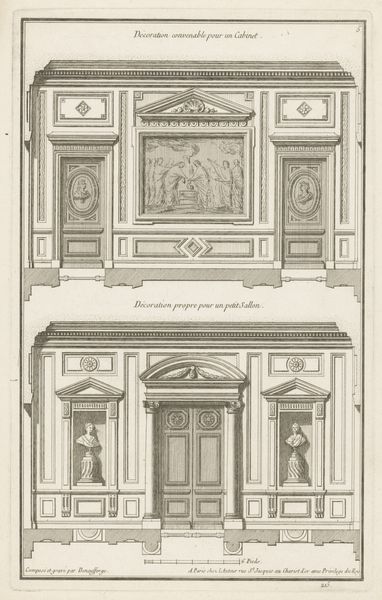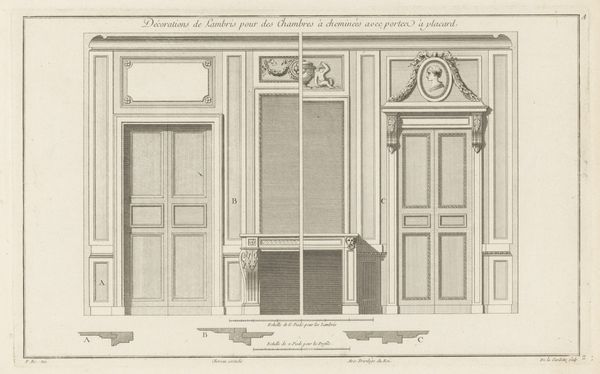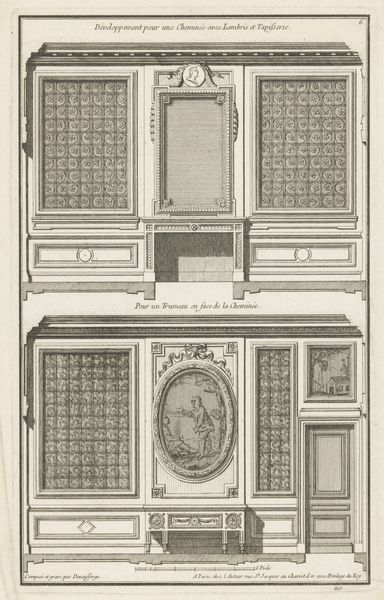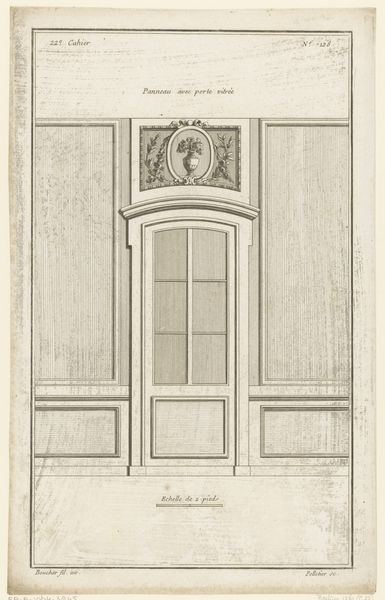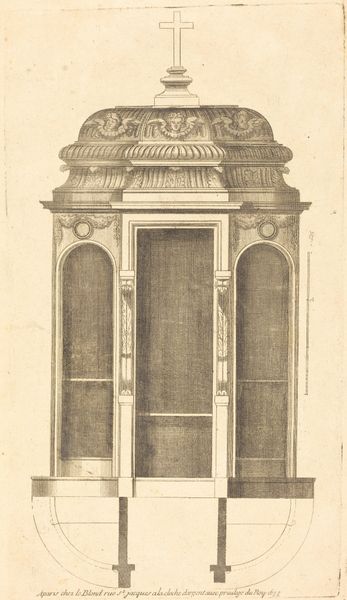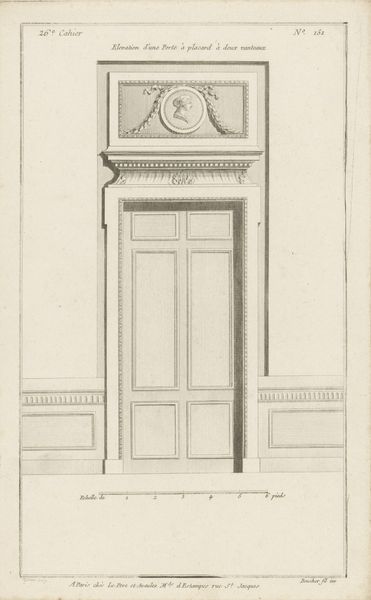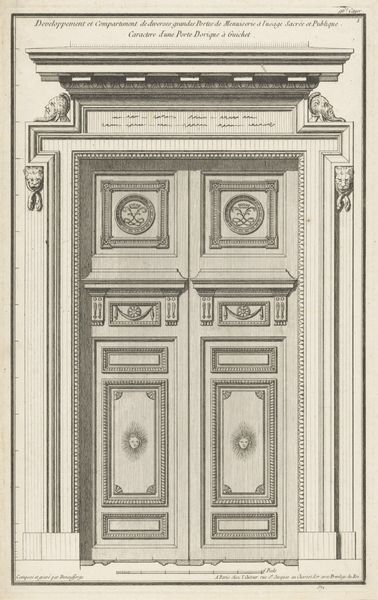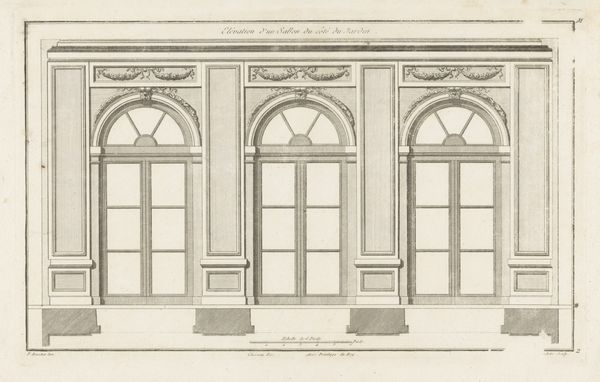
Hidden Door covered with a Mirror in the Trianon Palace,plate V from the Series 'Portes a Placard et Lambris', published as part of 'L'Architecture à la Mode' 1618 - 1682
0:00
0:00
drawing, print, paper, engraving, architecture
#
architectural sketch
#
drawing
#
baroque
#
parchment
# print
#
paper
#
geometric
#
line
#
decorative-art
#
engraving
#
architecture
Dimensions: image: 7 11/16 x 5 5/16 in. (19.5 x 13.5 cm)
Copyright: Public Domain
Jean Le Pautre etched this design for a hidden, mirrored door in the Trianon Palace in the 17th century. The mirror, framed within a grid, presents a curious intersection of reflection and concealment. In the cultural context of the French court, mirrors were not mere objects of vanity but potent symbols of truth, self-awareness, and, paradoxically, illusion. The concept of the mirror extends far beyond its immediate function. The mirror as a symbol appears in various forms across history, from the classical myth of Narcissus, who was consumed by his reflection, to the Renaissance vanitas paintings, where mirrors signify the transience of life. Each age imbues this simple object with new layers of meaning. Consider how this motif has been passed down, constantly shifting. It may engage our subconscious, reminding us of our own mortality. This interplay between what is seen and what is hidden evokes a sense of the uncanny. It resonates with our collective memory. This simple object becomes a powerful force, engaging viewers on a deep, subconscious level. This cyclical progression is seen in this symbol, as it resurfaces, evolves, and takes on new meanings in different historical contexts.
Comments
No comments
Be the first to comment and join the conversation on the ultimate creative platform.


